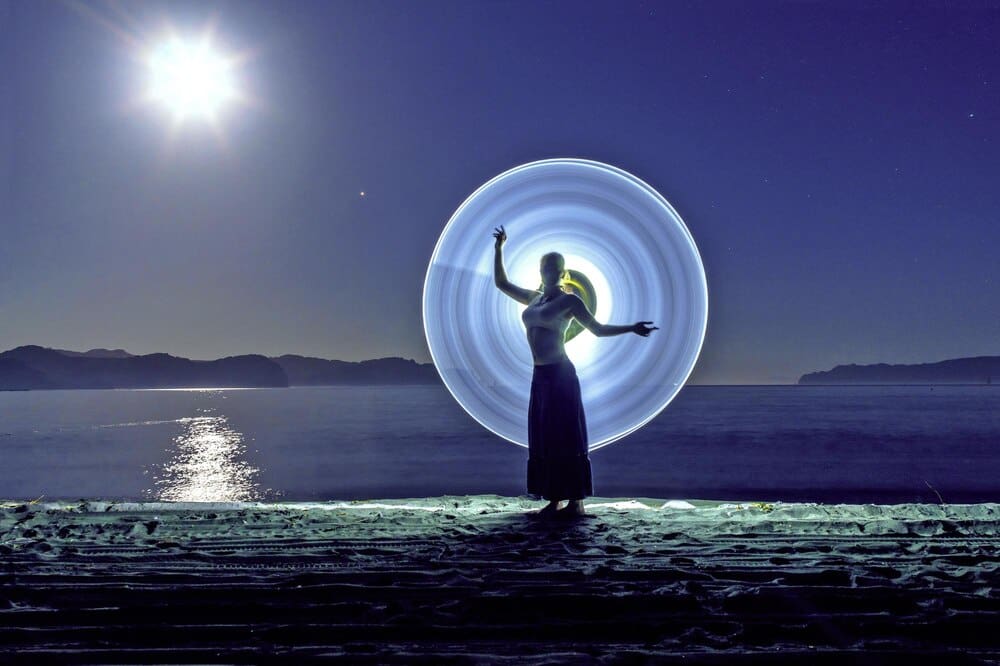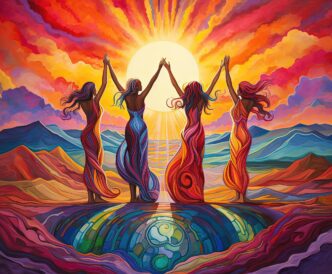In the celestial cabinet of Vedic Astrology, while the Sun reigns as the undisputed king representing the soul, it is the Moon, or Chandra, that holds the pivotal role of the queen, governing the mind, emotions, and our very perception of reality. For any student of this ancient science, understanding the Moon’s placement in their birth chart is paramount, as this single celestial body dictates our immediate emotional responses, our sense of well-being, our relationship with our mother, and even the timing of life’s major events. The Moon’s influence is so profound because it acts as the cosmic mirror, reflecting not just the light of the Sun, but the very consciousness through which we experience our lives, making its health and placement the foundation of a stable and happy existence.
Chandra: The Queen of the Cosmos
In Vedic thought, the cosmos is a divine drama, and the planets, or Grahas, are its key actors. The Sun (Surya) is the source of all life, representing the pure, unchanging Self, the Atma. The Moon, however, represents the Manas, or the mind, which is the vehicle through which the soul experiences the material world.
This makes the Moon arguably the most personal and intimate planet in our chart. While the Sun is our core identity, the Moon is how we feel about that identity. It is the filter of our consciousness, coloring every experience, thought, and interaction with its unique hue, determined by its sign, house, and aspects at the moment of our birth.
The Mind, Emotions, and Perception
The Moon’s primary function in a chart is to reveal the nature of our inner world. Its significance is multifaceted, touching upon the very fabric of our psychological and emotional being.
Manas Karaka: The Significator of the Mind
Vedic astrology assigns the role of Manas Karaka, or the significator of the mind, directly to the Moon. This isn’t the analytical, intellectual mind of Mercury (Budha), which governs logic and communication. Instead, the Moon represents the receptive, feeling, and processing mind—the part of us that absorbs sensory input, forms impressions, and creates memories.
A strong, well-placed Moon indicates a mind that is calm, receptive, and resilient. It grants emotional intelligence, empathy, and the ability to navigate life’s ups and downs with grace. The person can process experiences clearly without being overwhelmed by them.
The Emotional Compass
Your Moon sign reveals your innate emotional needs and your default reactions. It is your inner compass, constantly pointing towards what makes you feel safe, nurtured, and content. For example, a Moon in fiery Aries reacts to situations with immediacy and passion, needing independence and action to feel emotionally secure.
Conversely, a Moon in watery Cancer, its own sign, is deeply sensitive and seeks emotional security through family, home, and nurturing others. Understanding your Moon’s placement is like receiving a user manual for your own heart, explaining why you react the way you do and what you truly need to feel at peace.
Shaping Our Reality
A profound Vedic principle states that the world is as we perceive it. Since the Moon governs our perception, its condition in the birth chart literally shapes our personal reality. A bright, unafflicted Moon allows us to perceive the world with optimism and clarity, finding the good even in difficult situations.
An afflicted Moon, however, can act like a distorted lens. If the Moon is conjunct with Saturn, one might perceive the world as a place of limitation and fear. If it is with Rahu, perception can be clouded by illusion, paranoia, or insatiable desires, leading to a constant state of mental unrest.
The Moon as a General Significator (Karaka)
Beyond the mind, the Moon holds sway over several other crucial areas of life, acting as a natural significator for key people and concepts.
The Mother and Nurturing
The Moon is the primary Matru Karaka, or significator of the mother. The condition of the Moon in a birth chart provides deep insights into one’s relationship with their mother and the quality of nurturing received in early childhood. A well-aspected Moon often points to a loving, supportive mother and a secure upbringing, which forms the bedrock of emotional stability in adulthood.
Conversely, an afflicted Moon can indicate a difficult relationship with the mother, or a childhood that lacked consistent emotional support. This can manifest later in life as an inability to nurture oneself or others, or a persistent feeling of insecurity.
The Public and Popularity
As the luminary that rules the night and reflects light to the masses, the Moon represents the public, the general populace, and one’s popularity. Politicians, actors, and public figures with a strong, prominent Moon often enjoy immense public affection and have a natural ability to connect with the feelings of the masses.
The Moon’s strength in a chart can indicate the capacity to influence public opinion and gain widespread acceptance. Its placement shows how the public perceives you and how comfortable you are in the public eye.
The Moon in Astrological Analysis
The Moon’s importance is so central that many foundational techniques in Vedic astrology are entirely dependent on it. Its position is not just another planetary placement; it is a secondary reference point for the entire chart.
The Chandra Lagna (Moon Ascendant)
Every Vedic astrologer analyzes a chart not only from the Ascendant (Lagna), which represents the physical body and life path, but also from the Chandra Lagna, or Moon Ascendant. This involves treating the house where the Moon is placed as the first house and reading the chart from that perspective.
This provides an analysis of life from the individual’s mental and emotional point of view. It reveals how a person internally experiences the events indicated by the main chart, offering a layer of psychological depth that is unique to Vedic astrology.
The Nakshatras: The Lunar Mansions
Perhaps the most critical role of the Moon is its connection to the 27 Nakshatras, or lunar mansions. These are divisions of the zodiac, each spanning 13 degrees and 20 minutes, which provide a much deeper and more nuanced layer of interpretation than the 12 zodiac signs alone.
The specific Nakshatra the Moon occupied at your birth is considered your birth star. It reveals core personality traits, motivations, and spiritual inclinations with astonishing accuracy. It is the soul’s unique energetic signature within the broader zodiac sign.
The Vimshottari Dasha System
The Moon’s Nakshatra position at birth is the key that unlocks the most widely used predictive system in Vedic astrology: the Vimshottari Dasha. This system maps out a 120-year cycle of planetary periods, indicating which planet’s energy will be most influential during specific periods of life.
The sequence of these planetary periods is determined entirely by the Moon’s birth Nakshatra. Therefore, the entire timeline of one’s fate—when career will blossom, when marriage may occur, when challenges will arise—is anchored to the Moon’s position, underscoring its unparalleled predictive importance.
Assessing the Moon’s Strength
Given its importance, assessing the Moon’s strength is a critical first step in chart analysis. A strong Moon is a great blessing, while a weak one requires conscious effort and remedies to manage.
Waxing vs. Waning (Paksha Bala)
The phase of the Moon is crucial. A waxing Moon (Shukla Paksha), especially as it approaches fullness, is considered strong, bright, and benefic. It bestows a positive, outgoing, and resilient mind. A waning Moon (Krishna Paksha), particularly near the new moon, is considered weak and can be malefic, potentially indicating a more introverted, sensitive, or troubled mind.
Afflictions and Conjunctions
The planets aspecting or conjunct the Moon have a direct impact on one’s mental state. A conjunction with Jupiter creates Gajakesari Yoga, a powerful combination for wisdom, respect, and prosperity. A conjunction with Venus can make one artistic and appreciative of luxury.
Conversely, afflictions are challenging. Saturn with the Moon can lead to pessimism and depression (Vish Yoga). Rahu can cause phobias, anxiety, and psychological disturbances. Ketu can create detachment and confusion, while Mars can lead to anger and emotional volatility.
Remedies for a Challenged Moon
Vedic astrology is a science of remedy. For those with a weak or afflicted Moon, there are time-tested practices to strengthen its positive qualities and mitigate its negative effects.
Chanting the Moon’s mantra, `Om Shram Shreem Shraum Sah Chandraya Namah`, especially on Mondays, is highly recommended. Wearing a high-quality, natural pearl set in silver on the little finger is a traditional gemstone remedy. Acts of service, such as donating white foods like milk, rice, or sugar, or caring for one’s mother or motherly figures, are powerful ways to honor and appease lunar energy. Finally, practices like meditation, spending time near bodies of water, and ensuring adequate sleep all help to soothe and balance the mind, which is the Moon’s primary domain.
In conclusion, the Moon in Vedic astrology is far more than just a satellite orbiting the Earth. It is the very bedrock of our emotional and psychological experience, the lens through which we view our world, and the anchor for the timeline of our destiny. To understand your Moon is to understand the rhythm of your own heart and mind. A strong, peaceful Moon is the greatest asset one can have, for it is the source of inner contentment, which is the true measure of a rich and successful life.








